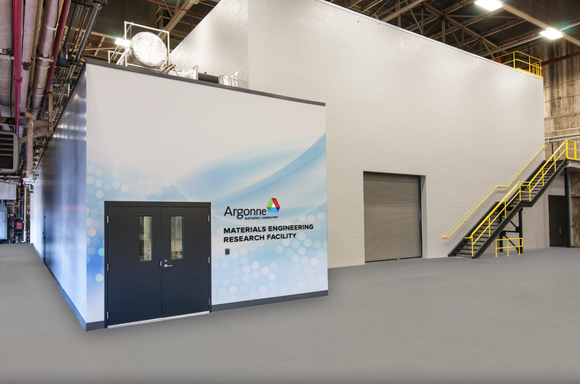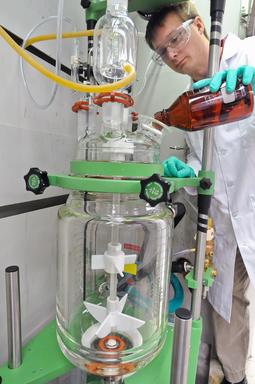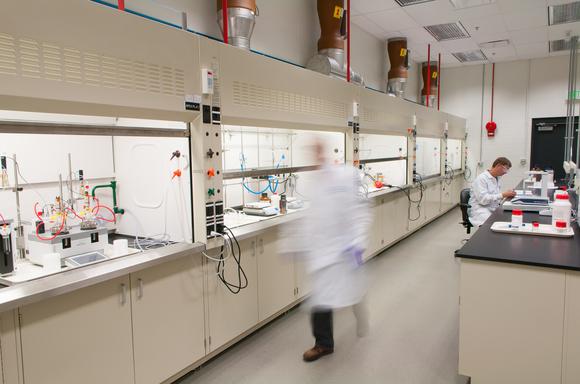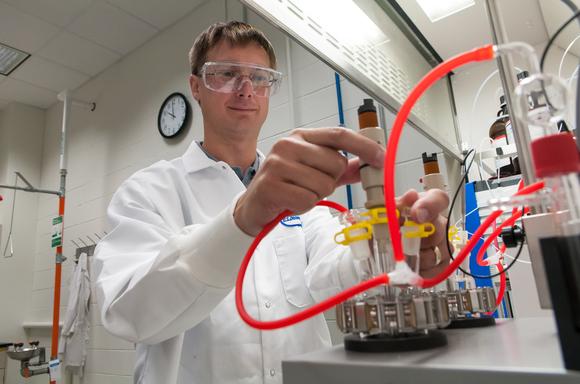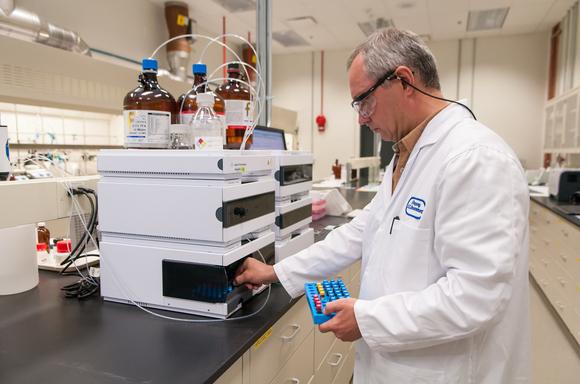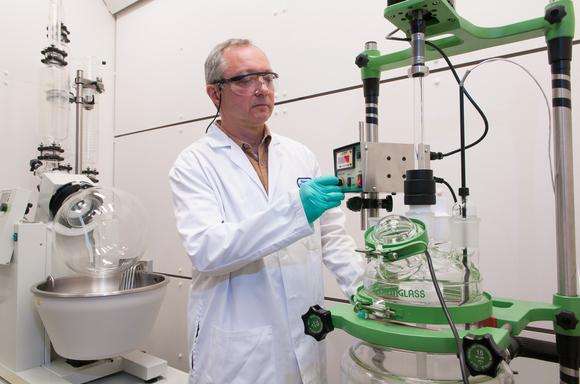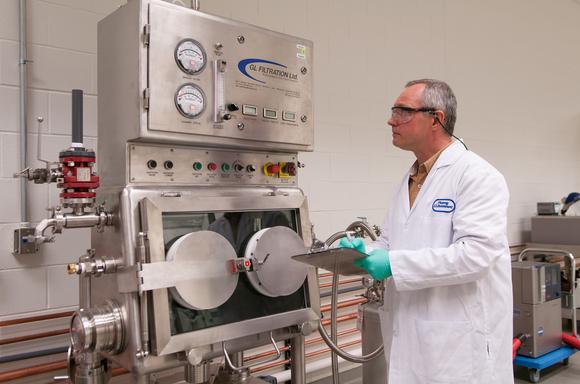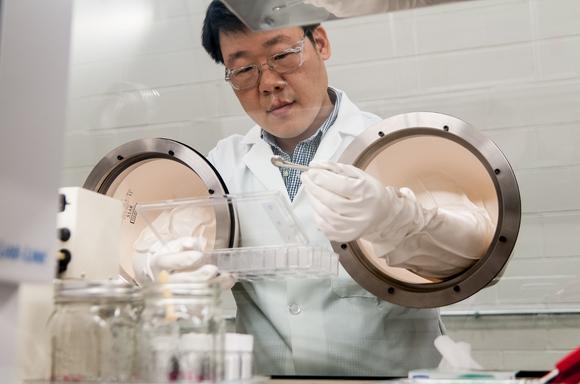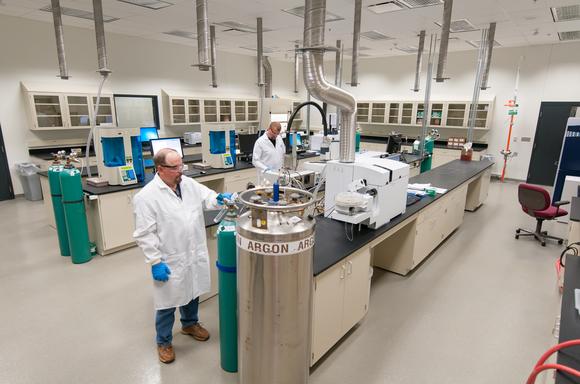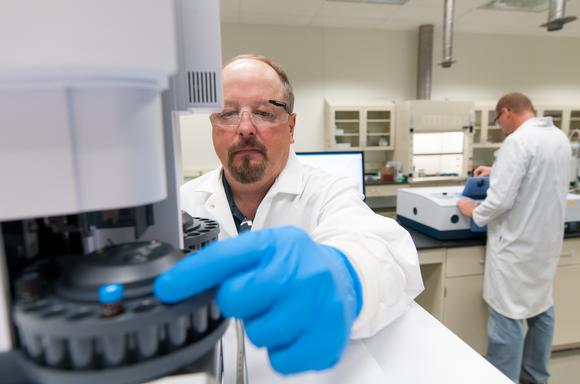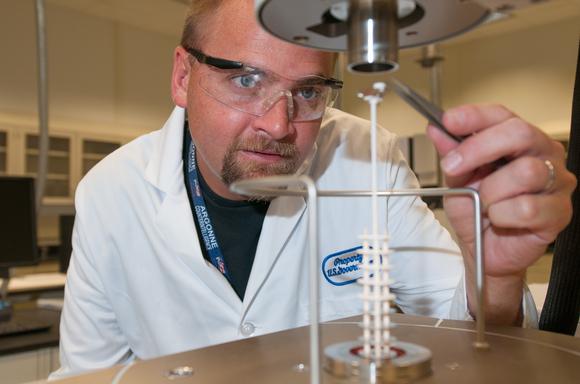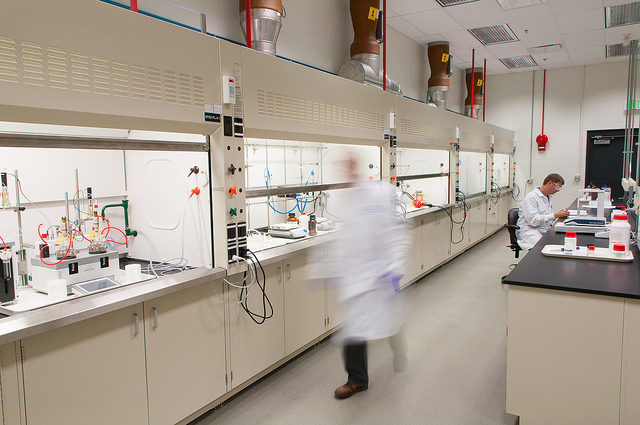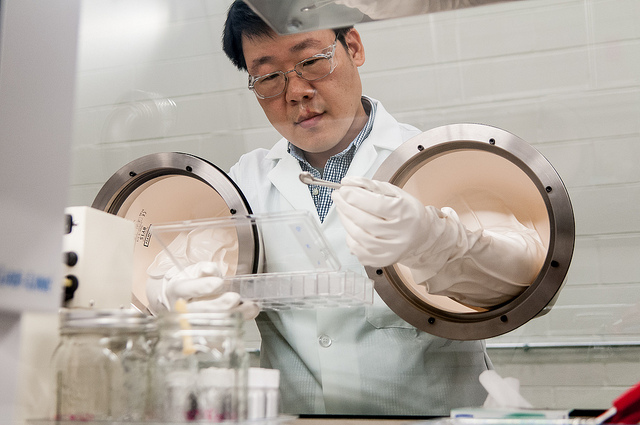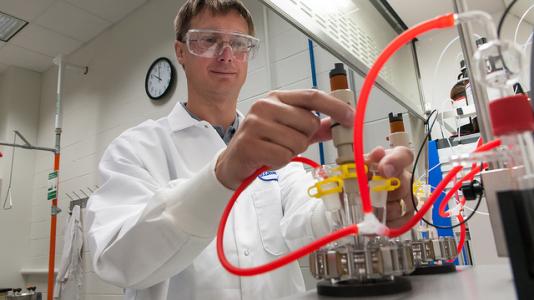
“A superior material discovered at the bench scale does not necessarily predict successful outcomes at the industrial scale,” explains Greg Krumdick, an engineer at the U.S. Department of Energy’s (DOE) Argonne National Laboratory. This poses a problem for scientists, like those participating in Argonne’s Energy Storage Research Initiative, who are looking to develop commercially-viable batteries from fundamental materials research.
Cue Argonne’s new Materials Engineering Research Facility (MERF) — using its state-of-the-art labs and equipment, researchers can safely determine fast and economical ways of producing large quantities of advanced battery materials for commercial testing.
The MERF was established because DOE recognized the need for a facility that could help expedite the transfer of advanced battery materials from the bench to industry. Though current projects in the facility are focused on the development of advanced batteries for vehicle and grid storage applications, the MERF can support scale-up projects for any type of material.
“The objective is to find the most efficient, streamlined and cost-effective methods for producing materials at an industrial scale, and then synthesize those materials for industrial validation.”
Much gets lost in translation when a bench-scale synthesis is tried at a larger scale — factors such as reaction timing, heat transfer and mixing velocity can change in a non-linear manner.
At the bench, scientists synthesize small samples on the order of hundreds of grams. Though this lets researchers quickly and efficiently find the properties they are targeting, bench-scale processes often do not work on an industrial scale — which is where the MERF comes in.
“Once a target material has been identified, it can be scaled to multiple-kilogram quantities in the MERF,” said Krumdick. “The objective is to find the most efficient, streamlined and cost-effective methods for producing materials at an industrial scale, and then synthesize those materials for industrial validation.”
MERF is the only facility at Argonne that has H-occupancy rated labs approved to handle the large amounts of hazardous chemicals required for scale-up experimentation. The space meets rigorous standards set by the International Building Code and National Fire Protection Association. Features like trench drains, high-efficiency particulate air filters, specialized ventilation appliances, fire-resistant separations and an abundance of sprinklers equip the space to handle high volumes of chemicals that might be toxic or flammable.
MERF’s 10,000-square-foot space accommodates the entire scale-up process, from fundamental process research and development, to industry-ready process scale-up, to post-production analysis of scaled-up samples. Currently, the facility contains bench-top pilot labs, walk-in pilot labs, high-bay spaces and a dedicated analytical lab.
Researchers start their scale-up research in the process research and development lab. With five bench-top fume hoods, the space is designed to handle a generous volume of work. Researchers can have a number of different experimental setups operating simultaneously to speed up the development process.
Following small-scale experimentation, researchers carry out their next steps in large walk-in hoods in the process scale-up lab. These labs are sized to contain up to 100-liter reactors and designed to cater to a constantly changing flux of experiments. Much of the equipment is portable, allowing researchers to rapidly change out complex experimental setups.
The high-bays host the largest-scale work. These 32-foot-tall spaces can hold oversize equipment such as large reactors, distillation columns or spray dryers. Every high-bay has a 5-ton bridge crane to move heavy apparatus. Adjoined to each lab is a control room that allows researchers to monitor their experiments.
Also located within the facility is a fully equipped analytical lab that allows for the immediate evaluation of synthesized organic or inorganic materials. Analytical chemists can use the lab’s state-of-the-art instruments to determine whether scaled-up materials have the same properties as their original samples and generate a quality assurance report to accompany samples sent to industry for evaluation. Direct access to these tools expedites the scale-up process, since scientists do not have to send samples away or go off-site for analysis.
Current DOE-funded projects at the MERF are looking to scale up battery electrolyte and cathode materials. Argonne researchers have already successfully scaled up many materials and have provided numerous samples to industry for evaluation, including the synthesis of several redox shuttles that keep lithium-ion batteries from overcharging.
The MERF also supports direct collaborations between Argonne and industry. The facility meets Argonne’s standards for business and environmental practices, which follow quality and environmental management certifications set by the International Organization for Standardization. In addition, with access to each lab controlled by card key access, companies can be assured that their proprietary information remains secure.
About Argonne
Argonne National Laboratory seeks solutions to pressing national problems in science and technology. The nation’s first national laboratory, Argonne conducts leading-edge basic and applied scientific research in virtually every scientific discipline. Argonne researchers work closely with researchers from hundreds of companies, universities, and federal, state and municipal agencies to help them solve their specific problems, advance America’s scientific leadership and prepare the nation for a better future. With employees from more than 60 nations, Argonne is managed by UChicago Argonne, LLC for the U.S. Department of Energy’s Office of Science.
Materials Engineering Research Facility
